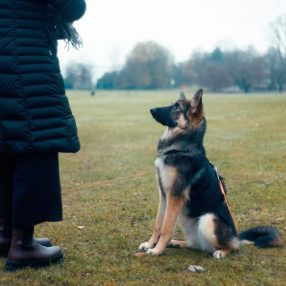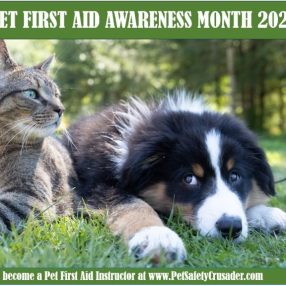
The sweltering heat is upon us and making sure our pets stay safe should be of prime importance. Some refer to these hot August days as The Dog Days of Summer. The term comes from Greek Mythology: The star Sirius was named the “dog star” because it made up the nose of a constellation shaped like a dog. Sirius is the dog of Orion the hunter and the star bearing its name is in the constellation Canis Major (Latin for “greater dog”). When the rising sun and Sirius converged near the end of July centuries ago, it marked the hottest days of the year. The Romans referred to this period as dies caniculares or “days of the dog star” which eventually translated to “dog days.” However, due to a wobble in Mother earth’s rotation, the position of the stars in the night sky shift over time. According to The Farmer’s Almanac, the modern “dog days” are the 40 days from July 3 – August 11, but since the earth’s rotation will continue on its wobble, millenniums from now, Sirius’ rise in symphony with the sun may be called “the dog days of winter.”
No matter what you call it, this time of year can be extremely hot for pets and people alike, and it only takes a short period of time for a pet left in a car to be in a deadly situation! Pets do not sweat to regulate their body temperatures (normally 100.4°F – 102.5°F). Dogs pant to exchange cooler outside air with the warm humid air in their lungs while cats do not usually pant until they are overwhelmed by the heat. If the outside air is not cooler than their body temperature, an animal can succumb to Heatstroke which can cause brain damage, kidney failure, cardiac arrest, and death. Old and overweight pets as well as short-nosed breeds are at the greatest risk.
“Besides being left in a parked car, Heatstroke can occur if an animal is left outside without proper shade and fresh water, from blow dryers and cage dryers, matted fur that traps heat close to the body, from crates and dog houses that are not properly ventilated and even from exercise during the hottest parts of the day,” explains The Pet Safety Crusader, Denise Fleck. Fleck has taught more than 30,000 humans animal life-saving skills and wants to help YOU prevent problems from occurring but also to teach you how to be your pet’s hero should the worst happen.
Says Fleck, “If your dog is over-heated, carefully…
- Move your pet to a cooler environment. Indoors is best but even a shady sidewalk or grassy area can help.
- Place pet in a tub or wading pool only tummy-high, do not immerse pet! Or use a garden hose to wet his belly, pits, groin, and paws. Remember on hot days, water coming out of a hose can be scalding! Take care to let water run cool before spraying on your pet. You can also cover animal with wet towels and use a cold pack around neck (30 seconds on one side and then 30 seconds on the other).
- Offer water but do not force your pet to drink or he could aspirate fluid into his lungs. Fluids may need to be administered intravenously at the Vet.
- Check your pet’s body temperature every 5 minutes and stop cooling process when his temperature comes down to 103°F. If it reaches 104°F, PAWSitively get your dog to the vet at once and be prepared to treat for shock and administer Rescue Breathing & CPR.
Preventing and tending to a pet who has suffered heatstroke is only one of many things you can learn in a Pet First Aid Class. Don’t delay…sign up today: http://www.petsafetycrusader.com/products/classes/










